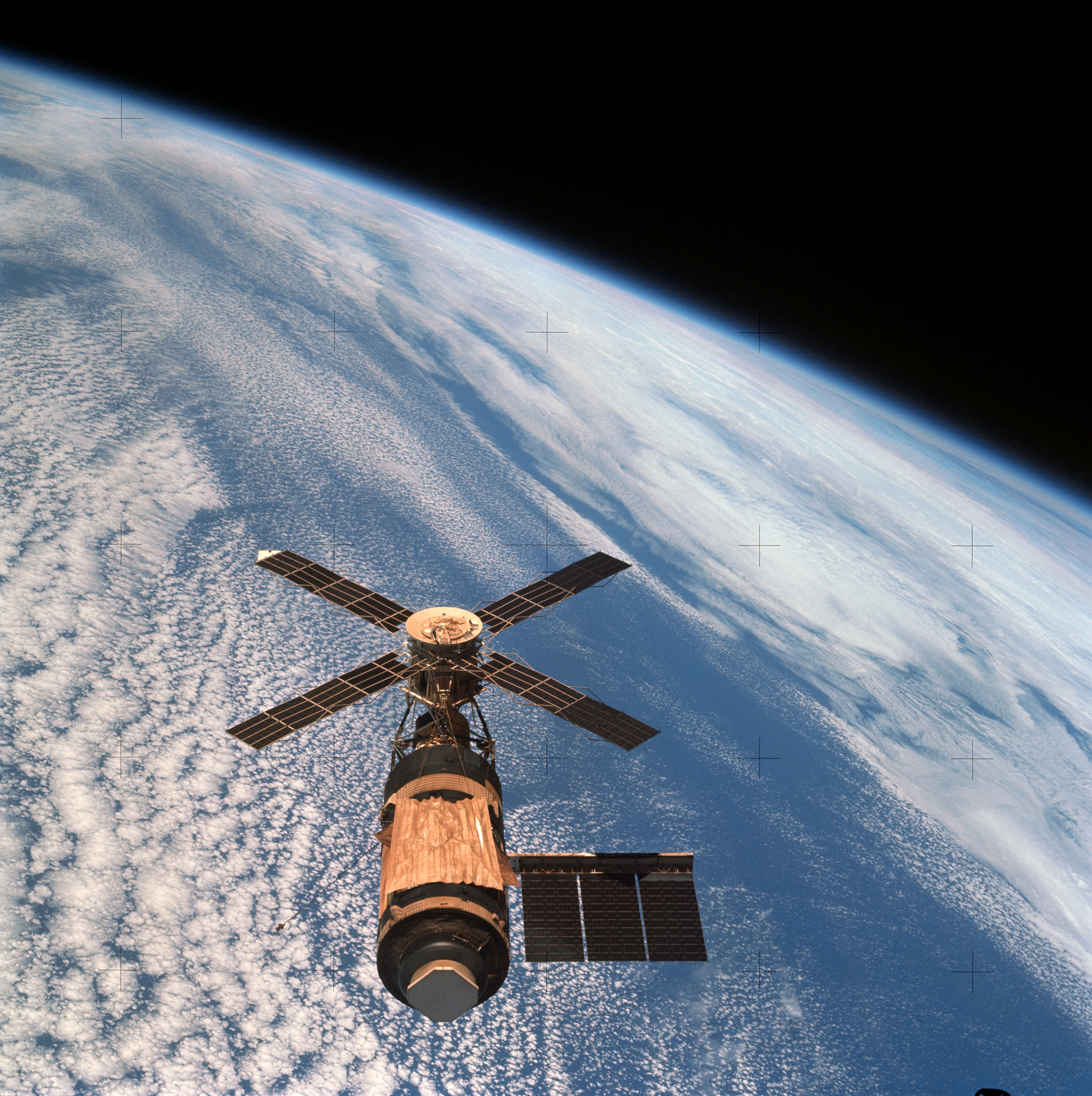|
Ageostrophic
Ageostrophy (or ageostrophic flow) is the difference between the ''actual'' wind or current and the geostrophic wind or geostrophic current. Since geostrophy is an exact balance between the Coriolis force and the pressure gradient force, ageostrophic flow reflects an imbalance, and thus is often implicated in disturbances, vertical motions (important for weather), and rapid changes with time. Ageostrophic flow reflects the existence of all the other terms in the momentum equation neglected in that idealization, including friction and material acceleration Dv/Dt, which includes the centrifugal force in curved flow. See also * geostrophic *geostrophic wind In atmospheric science, geostrophic flow () is the theoretical wind that would result from an exact balance between the Coriolis force and the pressure gradient force. This condition is called '' geostrophic equilibrium'' or ''geostrophic balanc ... References External linksMeteo 422 – Lecture 17 – The Omega Equation Al ... [...More Info...] [...Related Items...] OR: [Wikipedia] [Google] [Baidu] |
Geostrophic Wind
In atmospheric science, geostrophic flow () is the theoretical wind that would result from an exact balance between the Coriolis force and the pressure gradient force. This condition is called '' geostrophic equilibrium'' or ''geostrophic balance'' (also known as ''geostrophy''). The geostrophic wind is directed parallel to isobars (lines of constant pressure at a given height). This balance seldom holds exactly in nature. The true wind almost always differs from the geostrophic wind due to other forces such as friction from the ground. Thus, the actual wind would equal the geostrophic wind only if there were no friction (e.g. above the atmospheric boundary layer) and the isobars were perfectly straight. Despite this, much of the atmosphere outside the tropics is close to geostrophic flow much of the time and it is a valuable first approximation. Geostrophic flow in air or water is a zero-frequency inertial wave. Origin A useful heuristic is to imagine air starting from res ... [...More Info...] [...Related Items...] OR: [Wikipedia] [Google] [Baidu] |
Geostrophic
A geostrophic current is an oceanic current in which the pressure gradient force is balanced by the Coriolis effect. The direction of geostrophic flow is parallel to the isobars, with the high pressure to the right of the flow in the Northern Hemisphere, and the high pressure to the left in the Southern Hemisphere. The concept is familiar from weather maps, whose isobars show the direction of geostrophic winds. Geostrophic flows may be barotropic or baroclinic. A geostrophic current may also be thought of as a rotating shallow water wave with a frequency of zero. The principle of '' geostrophy'' or ''geostrophic balance'' is useful to oceanographers because it allows them to infer ocean currents from measurements of the sea surface height (by combined satellite altimetry and gravimetry) or from vertical profiles of seawater density taken by ships or autonomous buoys. The major currents of the world's oceans including the Gulf Stream, the Kuroshio Current, the Agulhas Cu ... [...More Info...] [...Related Items...] OR: [Wikipedia] [Google] [Baidu] |
Coriolis Force
In physics, the Coriolis force is a pseudo force that acts on objects in motion within a frame of reference that rotates with respect to an inertial frame. In a reference frame with clockwise rotation, the force acts to the left of the motion of the object. In one with anticlockwise (or counterclockwise) rotation, the force acts to the right. Deflection of an object due to the Coriolis force is called the Coriolis effect. Though recognized previously by others, the mathematical expression for the Coriolis force appeared in an 1835 paper by French scientist Gaspard-Gustave de Coriolis, in connection with the theory of water wheels. Early in the 20th century, the term ''Coriolis force'' began to be used in connection with meteorology. Newton's laws of motion describe the motion of an object in an inertial (non-accelerating) frame of reference. When Newton's laws are transformed to a rotating frame of reference, the Coriolis and centrifugal accelerations appear. When applied ... [...More Info...] [...Related Items...] OR: [Wikipedia] [Google] [Baidu] |
Pressure Gradient
In hydrodynamics and hydrostatics, the pressure gradient (typically of air but more generally of any fluid) is a physical quantity that describes in which direction and at what rate the pressure increases the most rapidly around a particular location. The pressure gradient is a dimensional quantity expressed in units of pascals per metre (Pa/m). Mathematically, it is the gradient of pressure as a function of position. The gradient of pressure in hydrostatics is equal to the ''body force density'' (generalised Stevin's Law). In petroleum geology and the petrochemical sciences pertaining to oil wells, and more specifically within hydrostatics, pressure gradients refer to the gradient of vertical pressure in a column of fluid within a wellbore and are generally expressed in pounds per square inch per foot (psi/ft). This column of fluid is subject to the compound pressure gradient of the overlying fluids. The path and geometry of the column is totally irrelevant; only the vertical ... [...More Info...] [...Related Items...] OR: [Wikipedia] [Google] [Baidu] |
Weather
Weather is the state of the atmosphere, describing for example the degree to which it is hot or cold, wet or dry, calm or stormy, clear or cloud cover, cloudy. On Earth, most weather phenomena occur in the lowest layer of the planet's atmosphere of Earth, atmosphere, the troposphere, just below the stratosphere. Weather refers to day-to-day temperature, precipitation, and other atmospheric conditions, whereas climate is the term for the averaging of atmospheric conditions over longer periods of time. When used without qualification, "weather" is generally understood to mean the weather of Earth. Weather is driven by atmospheric pressure, air pressure, temperature, and moisture differences between one place and another. These differences can occur due to the effect of Sun angle on climate, Sun's angle at any particular spot, which varies with latitude. The strong temperature contrast between polar and tropical air gives rise to the largest scale atmospheric circulations: the ... [...More Info...] [...Related Items...] OR: [Wikipedia] [Google] [Baidu] |
Newton's Laws Of Motion
Newton's laws of motion are three physical laws that describe the relationship between the motion of an object and the forces acting on it. These laws, which provide the basis for Newtonian mechanics, can be paraphrased as follows: # A body remains at rest, or in motion at a constant speed in a straight line, unless it is acted upon by a force. # At any instant of time, the net force on a body is equal to the body's acceleration multiplied by its mass or, equivalently, the rate at which the body's momentum is changing with time. # If two bodies exert forces on each other, these forces have the same magnitude but opposite directions. The three laws of motion were first stated by Isaac Newton in his ''Philosophiæ Naturalis Principia Mathematica'' (''Mathematical Principles of Natural Philosophy''), originally published in 1687. Newton used them to investigate and explain the motion of many physical objects and systems. In the time since Newton, new insights, especially around t ... [...More Info...] [...Related Items...] OR: [Wikipedia] [Google] [Baidu] |
Friction
Friction is the force resisting the relative motion of solid surfaces, fluid layers, and material elements sliding against each other. Types of friction include dry, fluid, lubricated, skin, and internal -- an incomplete list. The study of the processes involved is called tribology, and has a history of more than 2000 years. Friction can have dramatic consequences, as illustrated by the use of friction created by rubbing pieces of wood together to start a fire. Another important consequence of many types of friction can be wear, which may lead to performance degradation or damage to components. It is known that frictional energy losses account for about 20% of the total energy expenditure of the world. As briefly discussed later, there are many different contributors to the retarding force in friction, ranging from asperity deformation to the generation of charges and changes in local structure. When two bodies in contact move relative to each other, due to these variou ... [...More Info...] [...Related Items...] OR: [Wikipedia] [Google] [Baidu] |
Primitive Equations
The primitive equations are a set of nonlinear partial differential equations that are used to approximate global atmosphere, atmospheric flow and are used in most Global climate model, atmospheric models. They consist of three main sets of balance equations: # A ''continuity equation'': Representing the conservation of mass. # ''Conservation of momentum'': Consisting of a form of the Navier–Stokes equations that describe hydrodynamical flow on the surface of a sphere under the assumption that vertical motion is much smaller than horizontal motion (hydrostasis) and that the fluid layer depth is small compared to the radius of the sphere # A ''Conservation of energy, thermal energy equation'': Relating the overall temperature of the system to heat sources and sinks The primitive equations may be linearized to yield Laplace's tidal equations, an eigenvalue problem from which the analytical solution to the latitudinal structure of the flow may be determined. In general, nearly ... [...More Info...] [...Related Items...] OR: [Wikipedia] [Google] [Baidu] |
Centrifugal Force
Centrifugal force is a fictitious force in Newtonian mechanics (also called an "inertial" or "pseudo" force) that appears to act on all objects when viewed in a rotating frame of reference. It appears to be directed radially away from the axis of rotation of the frame. The magnitude of the centrifugal force ''F'' on an object of mass ''m'' at the perpendicular distance ''ρ'' from the axis of a rotating frame of reference with angular velocity is F = m\omega^2 \rho. This fictitious force is often applied to rotating devices, such as centrifuges, centrifugal pumps, centrifugal governors, and centrifugal clutches, and in centrifugal railways, planetary orbits and banked curves, when they are analyzed in a non–inertial reference frame such as a rotating coordinate system. The term has sometimes also been used for the '' reactive centrifugal force'', a real frame-independent Newtonian force that exists as a reaction to a centripetal force in some scenarios. History F ... [...More Info...] [...Related Items...] OR: [Wikipedia] [Google] [Baidu] |
Geostrophic
A geostrophic current is an oceanic current in which the pressure gradient force is balanced by the Coriolis effect. The direction of geostrophic flow is parallel to the isobars, with the high pressure to the right of the flow in the Northern Hemisphere, and the high pressure to the left in the Southern Hemisphere. The concept is familiar from weather maps, whose isobars show the direction of geostrophic winds. Geostrophic flows may be barotropic or baroclinic. A geostrophic current may also be thought of as a rotating shallow water wave with a frequency of zero. The principle of '' geostrophy'' or ''geostrophic balance'' is useful to oceanographers because it allows them to infer ocean currents from measurements of the sea surface height (by combined satellite altimetry and gravimetry) or from vertical profiles of seawater density taken by ships or autonomous buoys. The major currents of the world's oceans including the Gulf Stream, the Kuroshio Current, the Agulhas Cu ... [...More Info...] [...Related Items...] OR: [Wikipedia] [Google] [Baidu] |
Oceanography
Oceanography (), also known as oceanology, sea science, ocean science, and marine science, is the scientific study of the ocean, including its physics, chemistry, biology, and geology. It is an Earth science, which covers a wide range of topics, including ocean currents, waves, and geophysical fluid dynamics; fluxes of various chemical substances and physical properties within the ocean and across its boundaries; ecosystem dynamics; and plate tectonics and seabed geology. Oceanographers draw upon a wide range of disciplines to deepen their understanding of the world’s oceans, incorporating insights from astronomy, biology, chemistry, geography, geology, hydrology, meteorology and physics. History Early history Humans first acquired knowledge of the waves and currents of the seas and oceans in pre-historic times. Observations on tides were recorded by Aristotle and Strabo in 384–322 BC. Early exploration of the oceans was primarily for cartography and mainly ... [...More Info...] [...Related Items...] OR: [Wikipedia] [Google] [Baidu] |





